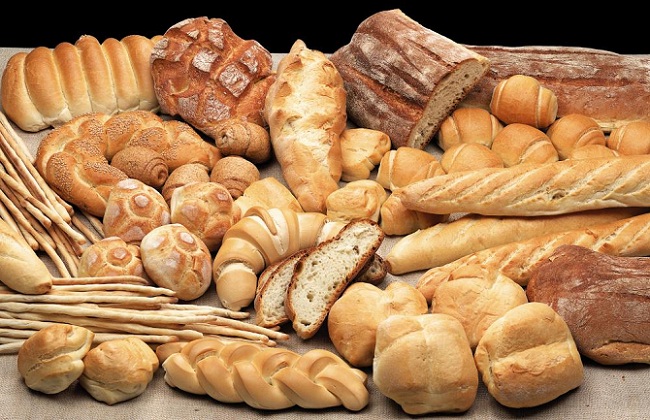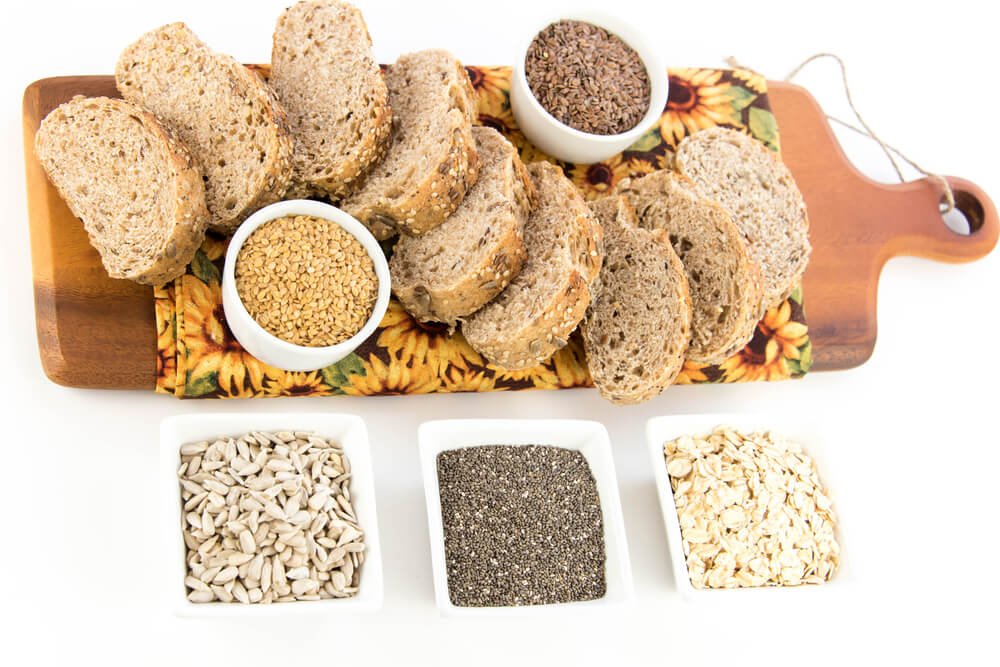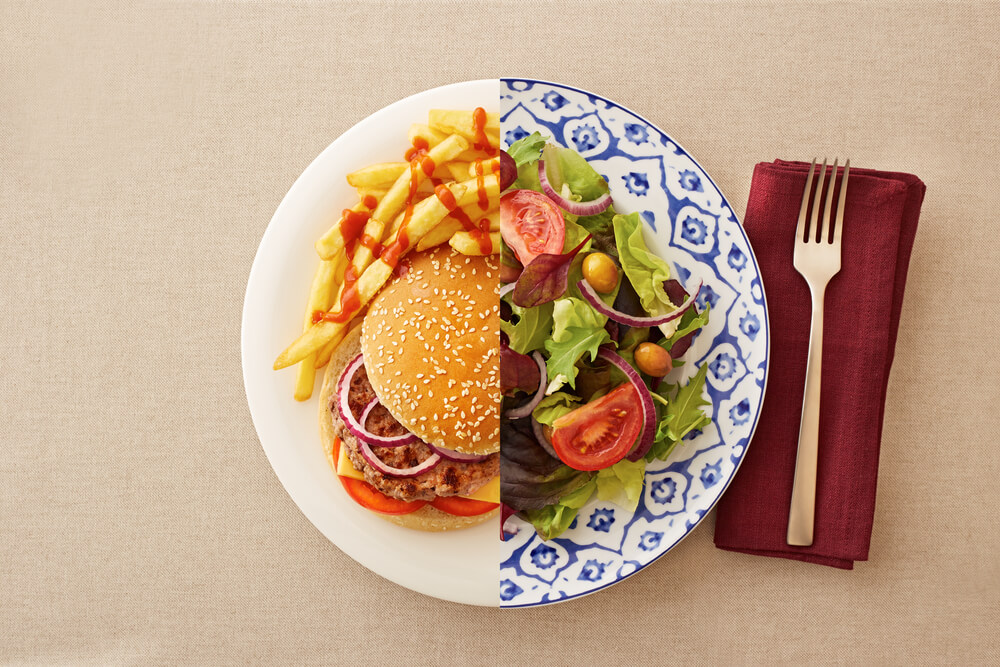
Oh, the dieting world. It really can be tricky, can’t it? It seems like every week a new fad diet comes out. One says you should only eat a certain kind of food, then the next week the fad diet says you should avoid that kind of food. If you’re old enough, you may remember what happened with eggs.
Eggs, as you may well know, offer an excellent level of protein with a lower level of calories. However, then research came out and said eggs were bad because of the cholesterol, so people stopped eating eggs.
A few years later the research said eggs had good cholesterol and people should eat eggs. You see, fad diets can hop, skip and jump all over the place. That’s why it’s important to stick with a well-rounded diet.
Carbohydrates, for someone who exercises, is important as it provides you with the necessary energy to perform during the workout.
With that said, much like cholesterol, there are good carbs and bad carbs. You need to know what the difference is and how to avoid bad carbs.
Thankfully, that’s exactly what were here to help you with.
What Are Bad Carbs?
In the scientific world, carbs are not referred to as “good” or bad.”
Instead, the carbohydrates are known as either simple or complex. This is in reference to the chemical makeup of the particular carbohydrate.
Three different kinds of carbohydrates fall into these two categories: fiber, starch and sugar.
Simple carbs are quick and easy to digest. Sugar is a simple carb. Sugar comes in many different forms.
You may think of cookies, soda and candy as a primary source for sugar.
This is true, but there are many other everyday food items that contain simple carbs. This includes fruit and milk.
A large number of baked goods contain sugar as well. If you were to eat a loaf of French bread made in a bakery and a slice of white bread in you buy in a wrapper, the wrapped bread will taste much sweeter.
This is because there’s sugar found within the bread (which is often used to extend the shelf-life of the bread, as it needs to last longer than the daily produced bread from the local bakery.
The definition of “bad carbs” may vary slightly from one person to the next. Some may attribute all simple carbs as bad carbs.
However, others may not include naturally produced simple carbs, such as that found in fruit or dairy, as bad. For some, bad carbs come in the form of added sugar.
When looking on a product label, sugar comes in many forms.
Other names for sugar (in terms of simple carbs used for added sweetness) include brown sugar, corn syrup, corn sweetener, maltose, malt syrup, fructose, sucralose, glucose, honey, sucrose, and trehalose (there are others but these are the most commonly used).
What’s the Difference Between a Simple Carb and a Complex Carb
While some may debate the difference between some forms of “bad” carbs, there isn’t any argument regarding what a good carb is.
All complex carbohydrates fall under the “good carb” definition.
These carbs are sugars that take the body longer to break down. Because the carbs take longer to break down, it gives the body a prolonged energy source.
For example, when athletes want a sudden burst of energy, they often consume a sugary substance. The sugar offers instant energy, but comes with a sudden drop off (which is why children will often crash and fall asleep after consuming sugar).
On the other hand, you more than likely have come across the term “carbo loading,” which is when a larger amount of carbs are consumed prior to an intensive athletic event.
Swimmers and bicyclists often consume large amounts of complex carbohydrates in order to give themselves sustained energy throughout the competition.
What are complex carbohydrates exactly?
These good carbs come in the form of legumes, whole grains, brown rice and starchy vegetables.
According to the National Academics Institute of Medicine (and reported by WebMD 2018), a healthy adult should receive between 45 and 65 percent of their daily calorie intake from carbs, 20 to 35 percent of their daily calories from fat, and 10 to 35 percent of their daily calorie intake from protein (naturally this will shift depending on the diet you are on or what kind of muscle growth you’re attempting to accomplish with your diet).

Long Chain vs. Short Chain Carbohydrates
Okay, so the three different kinds of carbs (fiber, starch and sugar) are broken down into two different kinds of carbs: simple and complex.
But what actually makes one simple and one complex? Is it just becomes one is found to be in sweeter foods and others come in starchier grains?
In reality, many foods actually contain both kinds of carbs. What makes one simple and one complex is its chemical makeup.
Carbs come in long chains and short chain molecules. Complex carbs, as you might guess, are long chain molecules. Because the complex carbs are made up of more molecules it takes longer for the body to process and digest the food.
Simple carbs, or short chain carbohydrates, are made up of fewer molecules, and thus are broken down and consumed faster.
When you investigate carbohydrates at the molecular level, it makes much more sense why some are complex/take longer to digest and why others are simple/digested faster.
But Not All Simple Carbs are Bad Carbs
Alright, so lets push complex, long chain carbs off to the side for now. Those are straight forward and, without a doubt, classified as good carbs. Instead, lets look only at simple carbs.
As we mentioned earlier, not all simple carbs are necessarily bad carbs.
Now, some people may mark off all simple carbs as bad carbs. It’s their choice not to eat certain kinds of simple carbs, but in reality, not all simple carbs are bad.
As a side note, if you are a regular YouTube viewer, you may have seen pre-video advertisements of a muscular individual, telling you not to eat bananas because it’s packed with sugar and sugar is bad for you. That’s partially true, but that’s also sales speak in order to get you to buy a product.
We’re not going to tell you to avoid eating bananas. Eating a banana is one of the best ways to increase your potassium intake and, as we’re about to show you, the simple carbs found in bananas are not necessarily bad for you.
The simple carbs found in fruit and vegetables is in fact different from the added, refined sugars pumped into cookies.
Why?
Because of the fiber found in these kinds of foods. Most of the complex, long chain carbohydrates we discussed are made up of the starchy kinds of carbs.
This is where the fiber carb comes into play. Fiber is critical with regards to digestion. Fiber slows down the digestion process by clinging to other carbs.
If you’ve ever looked at the labeling on Atkins based food products (which is a low carb based diet), you’ll often see the phrase “net carbs” used. This is the total number of carbs, minus the fiber.
So, if a food has 10 grams of carbs with 6 grams of fiber, you’d have “4 Net Carbs.”
This is all because, with the fiber clinging to the carbs, it prevents your body from digesting that.
In essence, fiber turns the simple carbs into complex carbs.
And, as fruits and vegetables are often packed with fiber, it substantially brings down the level of simple carbs your body consumes.

Okay, So What Exactly is a Bad Carb?
With all of the complex carbs and fiber talk, what exactly is a bad carb?
Bad carbs are forms of simple, short chain carbs added to the food. There is no nutritional value to these carbs other than to make the food sweeter. There is no added fiber to cling to the simple carbs in order to prevent the body from absorbing it.
Examples of foods with bad carbs include candy, pastries, cookies, sodas and any other kind of sweetened beverage (like a sweetened ice tea).
Another way to identify bad carbs is with something known as the glycemic index (GI). It is possible to monitor how your blood sugar will spike after eating a gram of processed sugar.
The GI index will compare the carbs in the food to the consumption of a pure gram of sugar, so you know relatively how your body will react (this is especially important if you are diabetic).
It’s just another way for you to measure the quality of a carb and how it will effect your body.

Everything in Moderation
Alright, so bad carbs are technically anything with processed, refined sugar. But is a bad carb really all that bad?
If you’re making a routine out of starting your day with pastries yes, bad carbs will in fact lead to weight gain, spikes in blood sugar and increased blood pressure.
However, even bad carbs can have a time and a place.
If you completely clear out your body of any kind of simple carbs, your body may actually go the opposite direction.
Have you ever felt incredibly weak and light headed, even though you’ve eaten a regular diet?
This often occurs when your blood sugar drops substantially.
You don’t need to be diabetic to suffer from this kind of issue. It simply means your body has not received the necessary simple carbs in order to maintain a healthy blood sugar level. Including fruit in your diet can help with this (such as the earlier mentioned bananas).
You may have had a parent bring orange slices to soccer games growing up and this kind of simple carbs can help give you the added burst of energy you need to continue competing.
Other times, you may suddenly crave something sweet after a long run or extensive workout. This is your body telling you your glucose levels are low.
There are weight trainers who will swear by chocolate milk in these instances, thanks to the protein and simple carbs for instant energy.
Basically, while there is such a thing as a good carb and a bad carb, it doesn’t mean you need to completely banish bad carbs from your body.
Yes, certain diets instruct you to avoid bad carbs, and other diets want you to remove carbs from the diet altogether.
However, if you’re going for a well rounded diet, there really is a time and a place for everything. You don’t need to avoid consuming bad carbs completely.
From time to time this is find (we admit we love the occasional bowl of ice cream on a summer day). It all just comes down to frequency and knowing your body.
In Conclusion
A healthy diet often includes carbs. However, it’s important for you to keep in mind the difference between good carbs and bad carbs.
By removing bad carbs from your diet, you’ll cut out excess calories and improve the quality of your diet.
Some diets want you to remove all of these carbs from your diet, at other times it’s enough to just monitor your bad carb intake (especially if you are diabetic or are over consuming bad carb foods).
Thankfully, knowing the difference between good and bad carbs isn’t terribly difficult, and you’ll know without reading the product label what kind of carbs it’s packed with.
So whatever diet you’re following, or if you just want a well rounded nutritional plan, make sure to do what you can to avoid these bad carbs.
Terry Asher
Latest posts by Terry Asher (see all)
- Better Family – Product Review Liquid Daily 2 oz - Dec 16, 2024
- Post-Workout Recovery: The Key to Optimal Performance - Nov 25, 2024
- Pre-Workout Supplements – Everything You Need To Know - Nov 18, 2024










[…] via- https://gymjunkies.com/bad-carbs/ […]
Wow, the cakes look delicious and attractive, I love to eat
Wow, the cakes look delicious and attractive, I love to eat
Very Helpful Article.
Great article! Keep ’em coming!
[…] consuming the right fats, you can avoid consuming empty calories like refined carbohydrates and sugar. Try eating whole-fat yogurt instead of low-fat yogurt packed with sugar, or swapping out […]
[…] consuming the right fats, you can avoid consuming empty calories like refined carbohydrates and sugar. Try eating whole-fat yogurt instead of low-fat yogurt packed with sugar, or swapping out […]
[…] A simple carb (or refined carb) is a kind of carb that has been “edited.” It’s been altered in order to strip away the fiber and often many of the vitamins. This leaves the carb to be extremely sweet and sugar-based. White pasta is actually a simple carb. […]
[…] A simple carb (or refined carb) is a kind of carb that has been “edited.” It’s been altered in order to strip away the fiber and often many of the vitamins. This leaves the carb to be extremely sweet and sugar-based. White pasta is actually a simple carb. […]
[…] A simple carb (or refined carb) is a form of carb that has been “edited.” It’s been altered with the intention to strip away the fiber and infrequently lots of the nutritional vitamins. This leaves the carb to be extraordinarily candy and sugar-based. White pasta is definitely a easy carb. […]
[…] A simple carb (or refined carb) is a kind of carb that has been “edited.” It’s been altered in order to strip away the fiber and often many of the vitamins. This leaves the carb to be extremely sweet and sugar-based. White pasta is actually a simple carb. […]
[…] how to decrease weight by cutting our refined carbs takes time, as simple carbs can lurk in surprising places. Still, they’re easily spotted in some […]
[…] how to decrease weight by cutting our refined carbs takes time, as simple carbs can lurk in surprising places. Still, they’re easily spotted in some […]
[…] how to decrease weight by cutting our refined carbs takes time, as simple carbs can lurk in surprising places. Still, they’re easily spotted in some […]
[…] how to decrease weight by cutting our refined carbs takes time, as simple carbs can lurk in surprising places. Still, they’re easily spotted in some […]
Thank you very much, but the sharing is very helpful for me!
[…] is that most of us are very bad at using fat for fuel. Especially if you have been eating very bad foods, not exercised much, and simply are in bad […]
[…] is that most of us are very bad at using fat for fuel. Especially if you have been eating very bad foods, not exercised much, and simply are in bad […]
[…] state of affairs, one among your first fats loss methods might be switching out good meals with unhealthy meals. Or perhaps simply dialing in your breakfast, and ensuring it’s on level. As an alternative […]
[…] stress about the smallest of details, which often is unnecessary. If your diet tells you to eat no carbs, do not worry about the few grams of carbs some nuts will give you. They are not going to hurt […]
[…] that most of us are really bad at using it chubby for fuel Especially if you have been eating a lot bad foodthey haven’t trained much, and are simply out of […]
[…] stress about the smallest details, which are often unnecessary. If your diet tells you not to eat Carbohydrates, don’t worry about the few grams of carbs that nuts will give you. They won’t hurt […]
[…] stress about the smallest of details, which often is unnecessary. If your diet tells you to eat no carbs, do not worry about the few grams of carbs some nuts will give you. They are not going to hurt […]
[…] of affairs, considered one of your first fats loss methods might be switching out good meals with bad foods. Or possibly simply dialing in your breakfast, and ensuring it’s on level. As an alternative […]
[…] is that most of us are very bad at using fat for fuel. Especially if you have been eating very bad foods, not exercised much, and simply are in bad […]